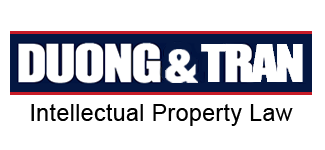According to Vietnamese Intellectual Property Law, Industrial Design (Design) is exterior appearance of a product manifested in shapes, lines, dimensions, colors or any combination thereof. A patent for industrial design is granted for a design, which is new, creative and industrially applicable.
The industrial design may consist of three-dimensional designs, such as the shape or surface of an article, or of two-dimensional designs, such as decoration in packages.
Unity
The application for industrial design must relate to (i) an industrial design including one or more alternatives that are not significantly different from each other or (ii) industrial design of a set of articles containing several articles that are used together or for a single purpose.
Protection Criteria
According to the Intellectual Property Law, protection conditions for industrial design are provided as follows:
Novelty
The standard for determining novelty of industrial design is based on universal novelty. To be considered to be new, an industrial design must not significantly differ from other industrial designs that have already been disclosed to the public, anywhere in the world, by publication in tangible form, by oral disclosure, by use or in any other ways, prior to the filing date or where appropriate, the priority date of the relevant design application.
Article 66.4 of the Intellectual Property Law provides following exceptions to loss of novelty in connection with disclosure of industrial design:
- The design is disclosed by any person without the consent of the person having the right to patent the design;
- The design is disclosed in the form of a scientific presentation of the person having the right to patent the design; or
- The design is disclosed as an exhibited object by the person having the right to patent the design at a national exhibition of Vietnam or an international exhibition.
In such circumstances, an application for the industrial design should be filed to the NOIP within 06 months after said disclosure.
Creativeness
An industrial design is considered to involve creativeness when, taking into account other industrial designs that have already been disclosed to the public, anywhere in the world, the industrial design would not have been obvious to person having common knowledge in the field to which the design pertains.
Industrial application
An industrial design is considered industrially applicable if it can serve as a model for an article in industry or handicraft.
Unprotected designs
Civil Code and the Intellectual Property Law stipulate on objects, which are not protected as industrial design as follows:
- Designs of articles that are contrary to the public interest, humanitarian principles or morality;
- Designs are determined only by the functional characteristics of articles. For example the shape of screw with a helical groove formed on its surface;
- Designs of civil or an industrial construction works e.g. appearance of houses, factories, bridges, except for construction works in module model;
- Designs of articles invisible in end use. For example, the shape and appearance of internal parts of a machine.
Specification
The specification must include the following sections in order:
- Title of the design: the title of the design identifies the article in which the design is embodied by the name generally known and used by the public;
- Classification: international classification code under the Locarno Agreement in the form of a class number and subclass separated by a dash;
- Field of application: a statement of the nature or intended use of the article in which the design is embodied;
- Known relevant industrial designs: stating designs at least differ from the claimed industrial design;
- Brief description of the figure or figures of the drawing: listing the figures of photographs of the claimed design;
- Feature description of the industrial design: disclosing essential features of the industrial design and specify features that are new, substantially different from the most relevant designs;
- Claims: statement of claim features including features of novelty and substantially different from the known relevant designs. Claims can refer to figures.
Drawings/photographs
The drawings or photographs disclose the entire visual appearance of the article in which the design is applied. It is of importance that the drawings or photographs are clear and complete.
The set of drawings or photographs for three-dimensional design usually comprises perspective, front, back, top, bottom, left, and right views in such order, on the same scale together and in the same direction. Each view should have a size between 90mm x 120 mm and 210 mm x 297 mm.
In special cases, a cross-sectional drawing(s) in necessary position may be included. If an article to which the design is applied has a cover or is foldable (for example: refrigerator, wardrobe or suitcase), drawings or photographs of it in the open state are necessary.
Costs
The costs of obtaining a patent for industrial design depend on factors such as the number of alternatives of the industrial design, the number of drawings/photographs, the convention priority rights claimed and objections raised during the examination by the NOIP.
Payment for the costs can be made at the time of filing and granting. Application fees including fees for filing, claiming priority right (if any), publication, conducting search and substantive examination are often paid on the filing date. Granting fees including fees for granting patent, registration and publication of industrial design are paid upon being invited by the NOIP in a notification of intention to grant of patent.
The service charges are subjected to 5% value added tax. Other disbursements such as telephone calls, faxes, postage, courier and copying will be charged on the basis of the actual expenses.
Industrial design applications may be filed via E-filing system or filed at the NOIP directly or by mail. The filed applications will be subjected to the examination process as the Flow Chart for obtaining an Industrial Design in the ANNEX.
Examination on filing
The Receiving Division examines whether the industrial design application satisfies the requirements on the documentation and the application fees have been paid.
If the application meets all the requirements on filing, a date of filing and an application number will be assigned.
Formalities Examination
The filed application will be then examined as to form within one month. The NOIP examines the application whether it complies with the administrative requirements or formalities.
If all the relevant documents and information are included and the application meets the formality requirement and the application fees have been paid, the application will be accepted as complete, and the application number and the filing date will be officially recorded. The NOIP will issue a Decision on Acceptance and send it to the applicant or his industrial design agent.
Publication
An industrial design application will be published in the Industrial Property Gazettes, Volume A of NOIP within 02 months from the date of the Decision on Acceptance.
The publication information contains the publication number and the publication date, the application number and the filing date, the international classification code, the information on the applicants, the designers, the industrial design agent, the priority data, the title and the drawings/photographs.
Substantive Examination
The application will be automatically examined as to substance within 07 months from the publication date. The substantive examination verifies whether there exist any grounds for refusal connected with failure to satisfy the protection criteria as mentioned above as well as priority rights and double patenting.
Grant, recordal and publication of patent
When the NOIP finds no grounds for refusal, it will issue a notification of intention to grant of patent in which the applicant will be invited to pay the fees for grant, registration and publication of the industrial design.
After the prescribed fees are paid, the NOIP will issue to the applicant a patent for industrial design, record the details of the industrial design in the National Register and publish the industrial design in the Industrial Property Gazettes, Volume B of NOIP within 2 months from the granting date.
Duration and renewal of patent for industrial design
The term of patent for industrial design is 5 years from the filing date.
The term may be renewed for two 5 year-consecutive-periods upon payment of the prescribed fee and the filing of a written application. Such application may be made at any time within 06 months before the end of each 5-year period, or it may be made within a grace period of 6 months after the end of each 5-year period, upon payment of prescribed fee and surcharge.




